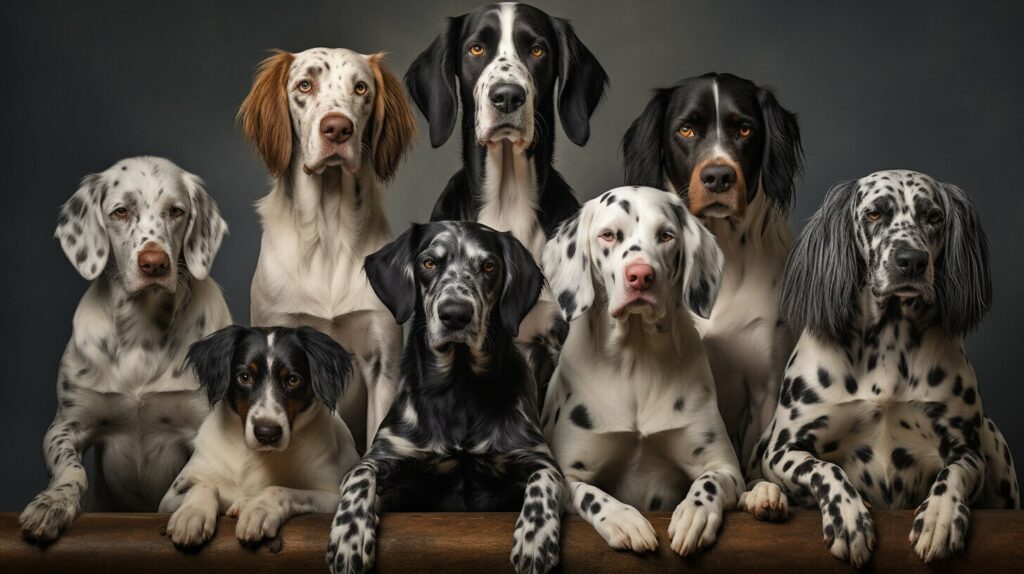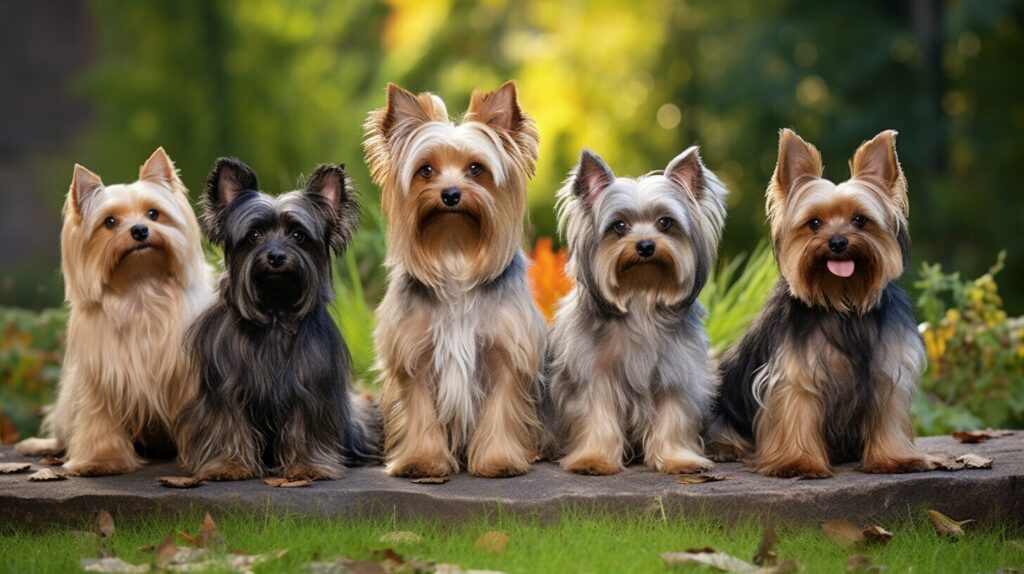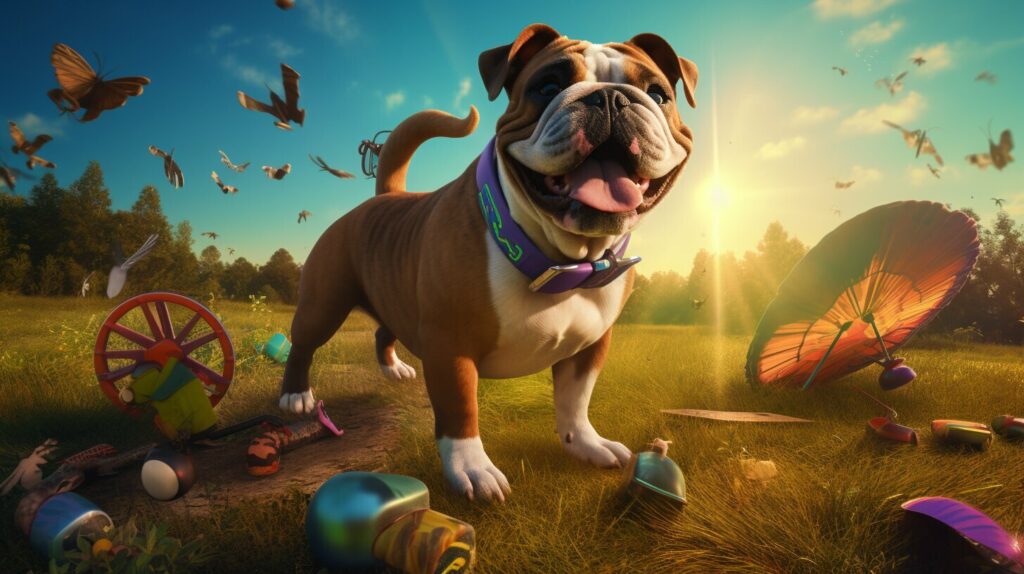For many dog lovers, a furry companion is more than just a pet – it’s a member of the family. And for those seeking a truly unique and exclusive addition to their household, rare dog breeds are the perfect choice.
These uncommon breeds are often hard-to-find and boast distinctive physical and behavioral characteristics that set them apart from their more common counterparts. From exotic coats to one-of-a-kind temperaments, rare dog breeds offer a level of exclusivity that cannot be found elsewhere.
Key Takeaways:
- Rare dog breeds are hard-to-find and offer a level of exclusivity that cannot be found in more common breeds.
- Rare breeds boast distinctive physical and behavioral characteristics that make them unique.
What Defines a Rare Breed?
Have you ever wondered what sets rare breeds of dogs apart from more common breeds? A rare breed is one that has a small population size and a limited geographic distribution. These breeds may also have specific genetic traits or physical characteristics that make them unique.
In general, a breed is considered rare if it has fewer than 300 annual registrations with the American Kennel Club (AKC) or another major kennel club. However, populations of some rare breeds may be smaller than this, with only a few hundred dogs worldwide.
Geographic distribution is another factor in determining rarity. Some breeds may be popular in certain regions or countries but relatively unknown elsewhere. For example, the Finnish Spitz is a rare breed in the United States but is more common in its native Finland.
Finally, breed recognition by major kennel clubs is another criterion for determining rarity. Some breeds may have a long history and strong cultural significance but are not yet officially recognized by major kennel clubs.
Preserving rare breeds is important for maintaining genetic diversity and preventing inbreeding. Inbreeding can lead to health problems and decreased vitality in a breed. By keeping rare breeds alive, dog enthusiasts can help maintain the rich diversity of canine genetics and ensure that these unique and fascinating dogs continue to thrive.
The Story behind Rare Breeds
Every dog breed has a unique history, but rare breeds often have stories that are particularly intriguing. From their origins in exotic locales to their specialized roles in human society, these uncommon dogs are fascinating to learn about.
For example, the Azawakh is a rare breed hailing from West Africa that was historically used by nomadic tribes to protect their livestock from predators. Its lean, tall build and impressive speed make it an excellent hunting dog as well. The Xoloitzcuintli, also known as the Mexican Hairless, has been a revered breed in Mexico for over 3,000 years, believed to have mystical and healing properties by the Aztec people. Its hairlessness is due to a genetic mutation that was selectively bred by the Aztecs.
The Cirneco dell’Etna is a rare Italian breed that was developed in the ancient city of Etna on the island of Sicily. Its small size and acute sense of smell made it the perfect dog for hunting small game in the rocky terrain of the region. Meanwhile, the Peruvian Inca Orchid is a hairless breed believed to have existed in the Incan empire for over 1,000 years. It was prized for its ability to keep its owners warm on cold mountain nights.
These are just a few examples of the rich history behind some of the rarest breeds of dogs. Learning about their unique stories can deepen your appreciation for these uncommon and often exotic dog breeds.
Characteristics and Temperament of Rare Breeds
Rare dog breeds are often sought after due to their exceptional physical attributes, unique personalities, and one-of-a-kind temperaments. These dogs possess distinct qualities that set them apart from more common breeds, making them a great choice for those seeking a unique canine companion.
Physical features of rare breeds can vary widely, ranging from the shaggy, dreadlocked coat of the Hungarian Puli to the hairless body of the Peruvian Inca Orchid. Some rare breeds, such as the Azawakh, possess a lean and elegant body structure, while others like the Neapolitan Mastiff are renowned for their massive size and muscular build.
The temperaments of rare breeds can also be quite distinctive. For example, the Shar Pei is known for its aloof and independent nature, while the Affenpinscher is a feisty and playful companion. On the other hand, the Thai Ridgeback is known for its loyalty and protectiveness, making it an ideal watchdog.
It is important to research the specific temperament and characteristics of each rare breed before making a decision on which one to adopt. Some rare dogs may require additional training or specialized care due to their unique temperaments or physical needs.
Overall, rare breeds offer a fascinating and rewarding experience for those willing to take on the challenge of ownership. They make excellent companions for individuals looking for a one-of-a-kind pet that will stand out from the crowd.
Challenges of Owning a Rare Breed
While owning a rare breed of dog can be exciting and rewarding, it also comes with its own set of challenges. Here are some key factors to consider before bringing home a scarce dog breed:
- Rarity: As the name suggests, rare breeds can be hard to find. You may need to travel long distances or wait for extended periods before finding a reputable breeder or rescue organization that has the breed you’re looking for.
- Cost: Rare breeds are often more expensive than their more common counterparts due to their limited availability. You can expect to pay a higher price for the initial purchase as well as ongoing costs such as food, veterinary care, and grooming.
- Specialized care: Some rare breeds require specialized care and training, which can pose a challenge for first-time dog owners. For example, certain breeds may have specific exercise needs or grooming requirements that must be met to keep them healthy and happy.
- Health issues: Some rare breeds are at a higher risk for certain health problems due to their genetic makeup. It’s important to research the breed’s health history and potential issues before making a decision.
- Breed recognition: Rare breeds may not be recognized by major kennel clubs, which can limit your ability to compete in shows or events.
Overall, owning a rare breed can be a fulfilling experience for those who are up to the challenge. It’s important to carefully consider the above factors and determine whether a scarce dog breed is the right choice for you and your lifestyle.
Finding a Rare Breed: Where to Look
If you have decided to add a rare breed dog to your family, you may be wondering where to start your search. Unlike more common breeds, finding a rare breed may require some extra effort. Here are some options to consider:
Reputable Breeders
One of the most reliable ways to find a rare breed dog is through a reputable breeder. Look for breeders who are members of breed-specific clubs or organizations and who follow responsible breeding practices. Make sure to ask questions about health testing, genetic diversity, and the puppies’ living conditions before making a purchase.
Rescue Organizations
Some rare breed dogs end up in rescue organizations or shelters due to various reasons such as the owners’ inability to care for them. Check with breed-specific rescue groups in your area or even national rescue organizations who specialize in rare breeds. While there may be fewer dogs available through rescue, adopting a dog can be a rewarding experience while providing a home to a dog in need.
Online Platforms
Various online platforms specialize in rare breeds, such as AKC Marketplace, Rare Breed Network, and Puppy Finder. These websites can provide a range of rare breed dogs available for purchase or adoption. It’s essential to be careful when dealing with an unknown breeder to ensure their legitimacy and transparency.
Shows and Events
Attending shows and events dedicated to rare breeds can be an excellent way to learn more about them and even meet breeders or owners. Check the American Kennel Club’s event calendar to find shows and events near you. Talking to breeders and owners can provide valuable insight into the breed’s temperament, characteristics, and care requirements.
Keep in mind that owning a rare breed may come with a higher price tag due to their scarcity and the efforts required to breed and raise them. However, the joy and satisfaction that come with owning a unique and exclusive dog can undoubtedly make the experience worthwhile.
Rare Breeds in Pop Culture
It’s not just dog enthusiasts who are fascinated by rare breeds of dogs. These unique and uncommon canines have also captured the attention of pop culture, appearing in movies, TV shows, and social media.
One example is the Pharaoh Hound, a rare breed originating from Malta, known for its unique ability to blush when excited. The Pharaoh Hound made an appearance on the hit TV show Game of Thrones, where it played the role of the direwolves.
Another rare breed that gained attention in pop culture is the Xoloitzcuintli or Mexican Hairless dog. This unique breed caught the eye of the late singer Prince, who included them in many of his music videos and live performances.
The Azawakh, a rare breed hailing from Africa, also made a splash in pop culture when it appeared in the movie John Wick: Chapter 3 – Parabellum. Known for their incredible speed and agility, the Azawakh played a fitting role in the movie as a trained assassin’s dog.
These are just a few examples of rare breeds making their mark in pop culture. With their distinctive looks and fascinating personalities, it’s no wonder that they have caught the attention of dog lovers and pop culture enthusiasts alike.
Rare Breeds as Extraordinary Pets
Owning a rare breed can be a unique and rewarding experience. Not only do these dogs stand out in a crowd, but they also offer a special bond with their owners. As an owner of a rare breed, you will have the opportunity to be part of an exclusive group of dog enthusiasts who appreciate the beauty and value of these exceptional dogs.
One of the most appealing aspects of rare breeds is their uniqueness. These dogs are not your typical everyday pets that you see on every street corner. They are exclusive and exotic, making them perfect for those who want to stand out from the crowd. From the Afghan Hound with its long hair and striking features to the Xoloitzcuintli, also known as the Mexican Hairless, with its hairless body and unique appearance, each rare breed has its distinctive look that sets it apart from other dogs.
Another benefit to owning a rare breed is the sense of pride that comes with it. When you have an exclusive pet like a rare breed, you become part of a select group of individuals who value and appreciate these extraordinary dogs. It gives you the opportunity to share your passion with others who share the same interest, and this can lead to fantastic opportunities to connect with breeders and other enthusiasts.
Owning a rare breed also presents the chance for unforgettable experiences. Some breeds, like the Basenji, have unique vocalizations that sound more like yodeling than barking. Other breeds, like the Japanese Chin, are known for their playfulness, making them perfect for bonding with children. Rare breeds offer many opportunities for adventure and exploration of their unique characteristics and traits.
However, owning a rare breed comes with unique challenges. Due to their exclusivity, these breeds are often harder to find or more expensive than more common breeds. Additionally, they may require specialized care, such as grooming or exercise, to keep them healthy and happy. But with the right preparation and care, the rewards of owning a rare breed far outweigh the challenges.
In conclusion, owning a rare breed can be a unique and rewarding experience. These dogs are not only strikingly beautiful, but they also offer a chance to be part of an exclusive group of dog enthusiasts who appreciate their rarity and value. If you’re looking for a pet that stands out from the crowd and offers many chances for adventure and exploration, a rare breed may be the perfect choice for you.
Conclusion
In conclusion, rare dog breeds offer a unique and exclusive canine companion experience that is hard to find with more common breeds. By owning a rare breed, you not only get a distinctive pet with unusual physical features and temperaments but also become part of a community dedicated to preserving these breeds and maintaining genetic diversity.
While owning a rare breed comes with its challenges, such as limited availability and higher costs, the rewards in terms of joy and satisfaction are immeasurable. These extraordinary pets can provide unforgettable experiences and memories that last a lifetime.
We encourage you to consider adding a rare breed to your life and explore the wide range of reputable breeders, rescue organizations, and online platforms dedicated to these unique companions. By doing so, you can become part of the exclusive club of people who own the rarest breeds of dogs and experience the joys and rewards that come with it.
FAQ
Q: What defines a rare breed?
A: A rare breed is classified based on factors such as population size, geographic distribution, and breed recognition by kennel clubs. These breeds are considered unique and uncommon.
Q: What is the history behind rare breeds?
A: Rare breeds have fascinating origins, with each breed having its own historical background. They evolved for specific purposes and often have notable stories or legends associated with them.
Q: What are the characteristics and temperaments of rare breeds?
A: Rare breeds have distinctive physical attributes, coat types, sizes, and temperament traits. These characteristics set them apart from more common breeds and make them unique companions.
Q: What are the challenges of owning a rare breed?
A: Owning a rare breed comes with unique challenges such as limited availability, higher costs, and the need for specialized care and training. Potential owners should consider these factors before making a decision.
Q: Where can I find a rare breed?
A: Rare breeds can be found through reputable breeders, rescue organizations, and online platforms dedicated to these exclusive breeds. Thorough research is important to ensure the legitimacy of breeders.
Q: How have rare breeds been portrayed in pop culture?
A: Rare dog breeds have captured the attention of popular culture through appearances in movies, TV shows, and social media. They are often portrayed as unique and fascinating companions.
Q: What makes owning a rare breed extraordinary?
A: Owning a rare breed brings joy, pride, and unforgettable experiences. These extraordinary pets form unique bonds with their owners and offer a sense of satisfaction in owning a distinctive companion.



